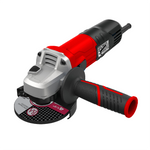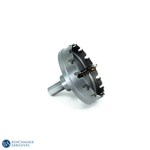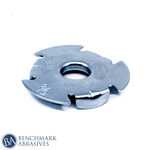
How to Restore Aluminum Rims After Oxidation Removal

Aluminum is a lightweight material frequently used for rims and wheels that gives any car a fantastic feeling of flair. Despite the wheels' apparent aesthetic appeal, there are a lot of useful ways to put these kinds of auto parts to use. Understanding how to clean aluminum rims is simple due to the metal's superior shine and strength over steel wheels, as well as how much easier it is to maintain.
We'll assist you in learning quickly how to restore aluminum rims to their original condition and appearance by removing oxidation. You can easily clean your wheels for a shiny gloss and uncompromised performance using just a few supplies and tools.
Let’s discuss how to clean your wheels, get rid of oxidation, and stop further oxidation buildup in this article.
Oxidation: What is it?
Corrosion is a byproduct of oxidation, not the same thing. Oxidation occurs when a metal comes into contact with an oxidizing agent, such as air. This results in the metal, especially aluminum, forming a thin layer of an element called aluminum oxide. Since aluminum is incredibly resistant to corrosion, it will be a long time before this happens. Corrosion doesn't start until the hardened film starts to break away.
While it's positive that it defends against corrosion, this indicates that corrosion may happen soon. Furthermore, it doesn't look very good on your wheels. Steel oxidation takes longer to occur than aluminum oxidation. Your rims' rough, white surface is a result of the strong bonds that aluminum atoms frequently form with oxygen.
For the record, aluminum does not rust. Only ferrous metals may rust; however, aluminum can develop after rust if ferrous metals scrape or embed themselves in it.
Restore Aluminum Rims: Remove Oxidation Easily
It is quite easy and quick to remove oxidation from your rims. The steps to removing oxidation and restoring wheels are as follows:
Step 1: Examine For Coatings
The first step is to check for any coatings on the wheel. Some aluminum wheels have a transparent layer applied over the aluminum to shield it and stop oxidation. You must ascertain whether you have a coating or not.
Apply a small quantity of polish to a concealed location using a clean microfiber cloth. Aluminum that has been oxidized will leave a black residue on the rag when you remove the polish, indicating that the metal is now naked. If there isn't any black residue, a coating is present.
Step 2: Wash The Wheels In Water
Remove as much dirt from your rims as you can before using any soap or cleansers. By doing this, you make sure that the metal is completely uncontaminated when you clean, polish, or seal it. The easiest way is to spray your car's wheels with a powerful stream of water from a hose. The easiest way is to spray your car's wheels with a powerful stream of water from a hose.
Make sure to thoroughly soak all of the wheels' components during the rinsing process and reach all of the design's crevices.
Step 3: Sand The Rims
To get rid of pits, scratches, and curb rash, start by sanding the rims with 400-grit wet/dry sandpaper. If the pits or scratches are deeper, start with a rougher sandpaper, like 240 or 320 grit. Usually, hand sanding yields the most effective results, but if you want to save some time and have rims that aren't difficult to reach with an orbital sander or angle grinder, you could use a sanding disc to do the majority of the job. Sand the surface until all pitting and scratches are removed.
Use fine-grit sandpaper to smooth the surface, then move up to 800 or 1,000 grit to remove any rough spots or ridges. A dry and clean microfiber cloth can be used to remove sanding dust.
Step 4: Wash and Dry
Rinse the rims, tires, and wheel wells once more with your hose to remove all soap and cleaner. To dry your rims, use a fresh, soft microfiber cloth. They are not recommended to be dried by air, as this may result in stains.
Step 5: Polish
After cleaning and removing all oxidation, polish your wheels using your favorite compound. Apply the metal polish with a dry, clean microfiber cloth, felt polishing disc, or power polisher (like a polishing ball). Make sure you cover the entire wheel, then finish by wiping it down with a new cloth.
Step 6: Apply Protective Coatings
There isn't much you can do to stop oxidation from happening because oxygen and aluminum have a close interaction. However, ignoring oxidation can result in corrosion, which is highly hazardous and something you want to prevent. To prevent corrosion or aluminum oxidation in the future, you should apply a protective coating and clean your rims regularly.
To help prevent corrosion, you can coat your aluminum rims with a variety of protective coatings, including -
- Paint
- Powder coats
- Anodizing
- Wax
Additional Tips For Cleaning Aluminium Rims
- Wear proper safety gear: The first and foremost tip is to ensure that you use proper safety gear before doing any process. It can protect you from harsh chemicals, and its smell can cause severe accidents when directly touched with your hand, or its strong smell will make you feel nauseous. Also, to prevent accidents, always work in a ventilated area because using harsh chemicals will make their strong smell.
- Selecting the right product: Ensure to select the right product according to the type of your wheel or one that is specifically designed for your wheel type.
- Avoid using strong chemicals: Strong chemicals should be avoided since they can harm the wheel's coatings. Always use mild cleaners and detergents to protect the coatings of your wheel.
- Applying the right technique: Make sure to apply the right techniques for the cleaning process. Wheels should always be completely cleaned first. To keep the cleaner from drying out, work on one wheel at a time. Always apply gentle pressure to the surface, as scrubbing too hard will damage the surface.
- Regular cleaning of wheels: Always clean your wheels regularly to avoid dust contamination that can cause oxidation.



































































